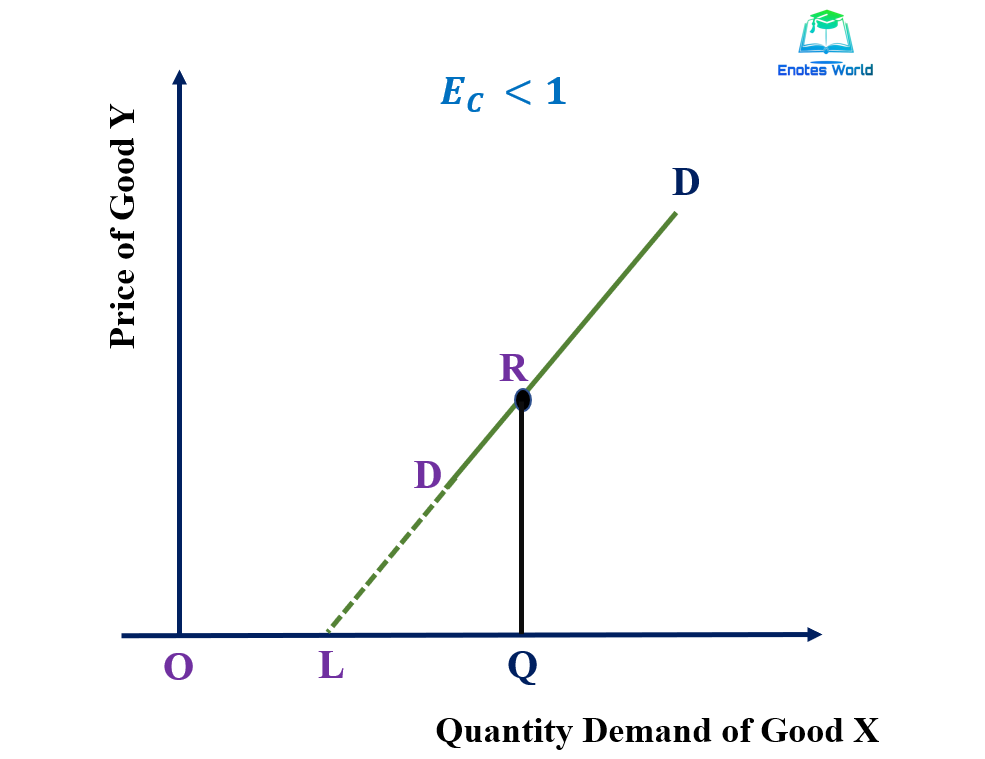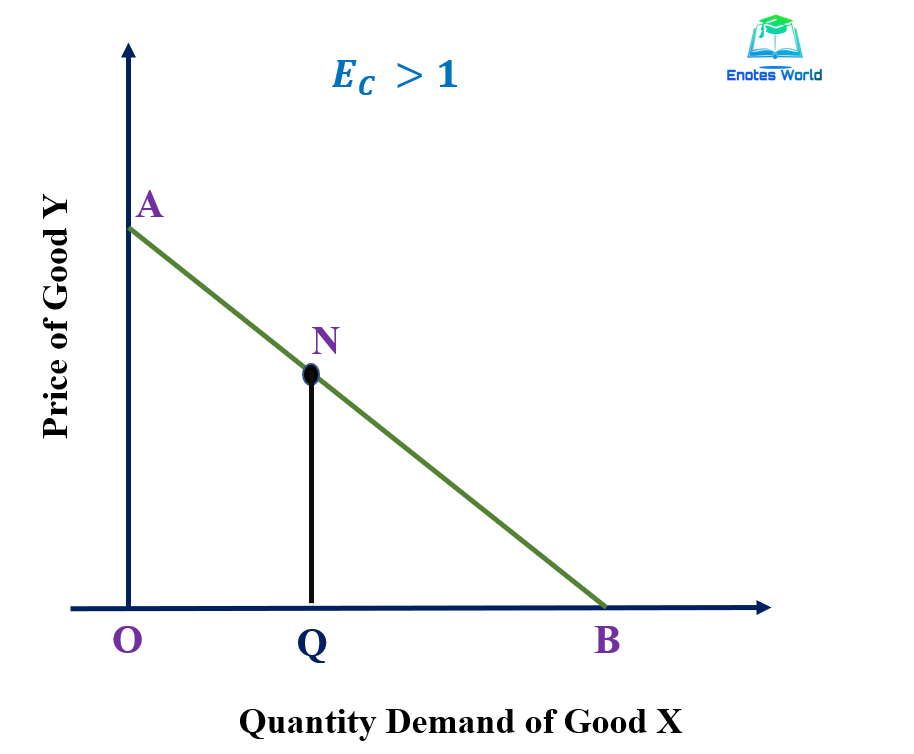Cross elasticity of demand measures the degree of responsiveness of the quantity demand for one good to the change in the price of any other related good, keeping other things the same. For the business firms, cross elasticity of demand is useful to see the competitors and determine their strategy accordingly. Goods and services can be classified with the help of cross elasticity of demand. Here we will explain different methods of measurement of cross elasticity of demand. Economists have suggested mainly three methods of measurement of cross elasticity of demand as;
- Percentage/Proportionate Method
- Point/Slope Method
- Average/Mid-Point/Arc Method
The following section presents a brief description of all the methods of measurement of cross elasticity of demand.
Contents
Percentage/Proportionate Method
This method measures cross elasticity of demand by dividing the percentage or the proportionate change in demand of a commodity (say X) by the percentage or the proportionate change in the price of another commodity (say Y), keeping other factors the same. Thus, cross elasticity of demand between good X and Y is the ratio of the percentage change in demand for good X to the percentage change in the price of good Y. the following formula is used to measure cross-elasticity between god X and Y under proportionate or percentage method.
EC= Percentage or Proportionate change in demand for good X/ Percentage or Proportionate change in the price of good Y
Or, EC= (∆QX/QX) *100/(∆PY/PY) *100; Or, EC= (∆QX/∆PY) *(PY/QX)
Where EC = Cross elasticity of demand; QX=Original quantity demanded of good X; ∆QX= Change in quantity demanded of good X; PY= Original price of good Y; and ∆PY = Change in price of good Y
If the coefficient of cross elasticity of demand is positive then good X and Y are substitute goods; with negative coefficient goods are complementary to each other and if the cross elasticity coefficient is zero then goods are independent or not related to each other.
Example of Measurement of Cross Elasticity of Demand
For example, if the price of good Y falls from Rs. 100 to Rs. 80 per unit and on the other hand the quantity demand for good X has increased from 400 nits to 500 units. In such a situation we can compute cross elasticity of demand between good X and Y by using the above formula.
Here %∆QX = (500-400)/400= 25% and %∆PY= (80-100)/100= -20%
Now, EC= (%∆QX)/ (%∆PY) = 25%/-20%= -1.25
Or
EC= (∆QX/∆PY) *(PY/QX) = (100/-20) *(100/400) = -1.25
Here the coefficient of cross elasticity of demand between good X and good Y is -1.25. it indicates that these goods are complementary to each other.
Point/Slope Method
If we have to measure the cross elasticity of demand at a particular point on the cross-demand curve then we have to use point method of measurement of cross elasticity of demand. The point method is more suitable when we have to see the effect on the demand of anyone good (good X) due to a very small change in the price of a related good (Y).
The cross-demand curve is a locus representing the various level of quantity demanded of a commodity at different prices of another commodity. The cross-demand curve for a substitute has a positive slope whereas it has a negative slope for a complement.
The point cross elasticity of demand for a substitute good can be computed by following the process of computing point income elasticity for normal goods. The following figure shows the calculation process of point cross elasticity of demand.

In the above figure, DD is the upward sloping cross demand curve. Its extension touches the x-axis right to the origin, so cross elasticity of demand is less than one. If the demand curve with its extension passes through the origin then cross elasticity is equal to one and if passes through left to the origin then cross elasticity of demand is greater than one. In all the cases cross elasticity is positive and whether it is equal to one or less or greater than one depends on the degree of responsiveness of change in demand as a result of a change in the price of substitute.
In the above figure, the cross elasticity of demand at point R =LQ/OQ< 1
Similarly, the point cross elasticity of demand for complementary goods can be measured by using the process of point price elasticity of demand. The following figure shows the measurement of cross elasticity of demand under point method in the case of complementary goods.

In the above figure, AB is the downward sloping cross demand curve showing the negative relation between the change in demand for a commodity X and change in the price of commodity y.
The coefficient of cross elasticity of demand at point N= QB/OQ>1
Average/Mid-Point/Arc Method
The average method is suitable when we have to compute cross elasticity with substantial changes in quantity demand and prices of related goods. So, when there are large changes in price and quantity, the arc method is appropriate. This method is also considered as the best method as it considers the average of original and final values of price and quantity for the measurement of elasticity. The following formula is used to compute the cross elasticity of demand under the arc method.

References and Suggested Readings
Adhikari, G.A. (2006). Microeconomics. Kathmandu: Asia Publications
Kanel, N.R. and et. al. (2016). Business Economics. Kathmandu: Buddha Publications
Mankiw, N.G. (2009). Principles of Microeconomics. New Delhi: Centage Learning India Private Limited
Salvatore, Dominick. (2003). Microeconomics: Theory and Application. Oxford University Press, Inc.
Shrestha, P.P. and et.al. (2019). Microeconomics for Business. Kathmandu: Advance Sarswati Prakashan.